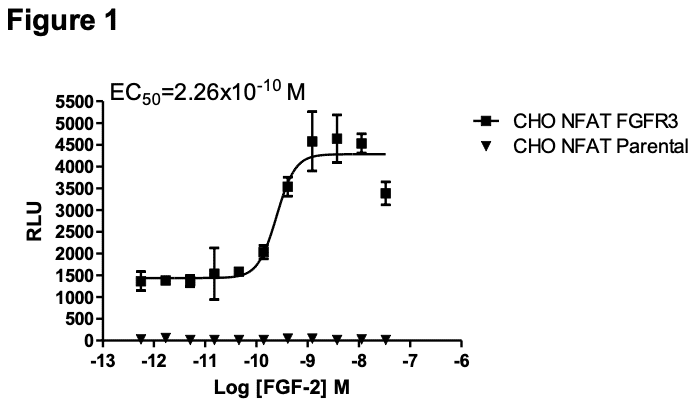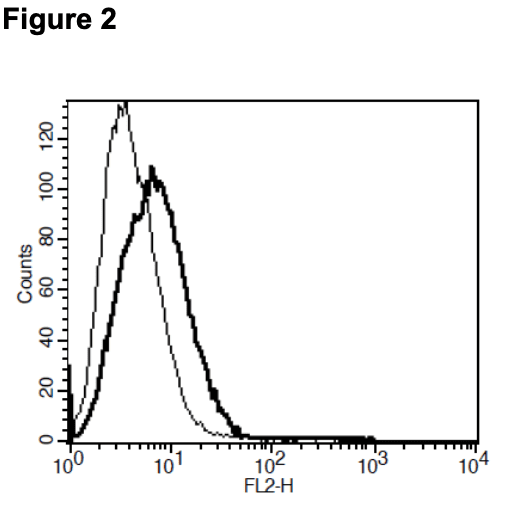Product Information
Catalog Number:
CK1002-1a
Lot Number:
CK1002-1a-020615
Quantity:
1 vial (2 x 106) frozen cells
Freeze Medium:
Sigma Freezing Medium (C-6164)
Host cell:
CHO-K1
Transfection:
Expression vector containing full-length human FGFR3 cDNA (GenBank Accession Number NM_000142) and vector pGL4.30[luc2P/NFAT-RE/Hygro](GenBank Accession Number DQ904462)
Recommended Storage:
Liquid nitrogen upon receiving
Propagation Medium: DMEM/F12, 10% FBS, 400 µg/mL G418; 250 µg/mL hygromycin
Stability:
In progress
Data Sheet
Background: Fibroblast growth factor receptor 3 (FGFR3) is a member of the fibroblast growth receptor family. FGFR3 is a receptor tyrosine kinase that is activated by both acidic and basic fibroblast growth factors. FGFR3 plays an important role in bone maintenance and development. Mutations in FGFR3 have been linked to osteochondrodysplasia, craniosynostosis, and achondroplasia. Recent studies have also shown that somatic mutations in the FGFR3 gene are associated with bladder cancer, cervical cancer, and multiple myeloma.
Application: Functional assays


Figure 1. Ligand-induced dose-dependent luciferase activity measured by FlexStation III after 24 hours of treatment with the ligand in starvation media containing 0.2% FBS. Figure 2. Receptor expression on cell surface measured by flow cytometry (FACS) using an anti-FGFR3 antibody. Thin line: parental cells; thick line: receptor-expressing cells.
References:
Foldynova-Trantirkova, Silvie, William R. Wilcox, and Pavel Krejci. “Sixteen Years and Counting: The Current Understanding of Fibroblast Growth Factor Receptor 3 (FGFR3) Signaling in Skeletal Dysplasias.” Human mutation 33.1 (2012): 29–41. PMC. Web. 3 Feb. 2015.
